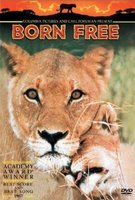
Born Free deals with the contradictory question of how to demonstrate the behaviour of a wild animal in a tame, domestic environment. Through an exploration of the binaries between wild and tame, domestic and barbarous, Elsa’s hamartia is revealed; she is too wild to be a tame pet, but too tame to be a wild animal.

Born Free ends with the idealistic image that Elsa can function as both a wild animal and a tame pet. The final few minutes of the film attempt to replicate a typical family reunion, only here it is a lion reuniting with her captors, presenting to them her cubs and reassuring both them and the audience that her intrinsic nature as a wild beast has not been damaged by her tame upbringing. Thus the human influence has made no impact on the decline of the natural world, and the circle of life continues. Ultimately, humans here have been allowed to corrupt a wild animal through their human-animal bond, yet having given Elsa back her freedom they are not made to feel guilty for their corruption; her eventual success in the wild, presented by having cubs, means she is not irrevocably debilitated.
Joy’s voiceover is problematic however, she states that Elsa’s cubs are “wild, and they should remain wild”. Possibly she is aware that too great a human influence is wrong, yet the film dons its rose tinted glasses and refuses to accept that fundamentally there is anything dysfunctional in this sort of human-animal relationship. Joy reiterates her message claiming that these animals are “born free and living free” – thus it would appear that while Elsa has not always been free to be wild, her intrinsic characteristics of a ‘wild animal’ have not been shattered.
However, these human-animal dynamics are dictated by a filmmaking power that is contradictory in how it is making its critique. In order for the portrayal of wild animals to be successful, wild animals must be rendered tame and taught to merely ‘act’ wild, and this is where the problem lies. ‘Boy’ the lion was found abandoned, reared as an army mascot before being used for the film. After this however he was, like Elsa, existing unsteadily somewhere between the boundaries of wild and tame, yet in reality he was unable to exist entirely in a human or animal world.
The use of Elsa’s cubs then becomes even more problematic when exploring this human-animal relationship. In presenting the audience with a picture of a new generation of wild cubs, the effect of them off-screen is arguably similar to Mara, the lion that portrayed adult Elsa – to show an act of wildness on screen, the wildness of an animal must be sacrificed, and the ethics and obligations of filmmaking must be questioned.
Further Reading:
Grindlay, Irene, Velvet Paws: The Story of Mara, the Young Lioness, (London: Robert Hale, 1966)
Ray, Rachel, Elsa’s Legacy: The Born Free Story, Nature on PBS – US TV review, ‘The Telegraph’ (2011) <https://www.telegraph.co.uk/culture/tvandradio/8246070/Elsas-Legacy-The-Born-Free-Story-Nature-on-PBS-US-TV-review.html>
IMDB page: https://www.imdb.com/title/tt0060182/?ref_=nv_sr_1
PBS webpage: https://www.pbs.org/wnet/nature/elsas-legacy-the-born-free-story-how-did-born-free-affect-you/6145/
Born Free website: https://www.bornfree.org.uk/
Trailer: https://www.youtube.com/watch?v=wTC8s0fkNSI